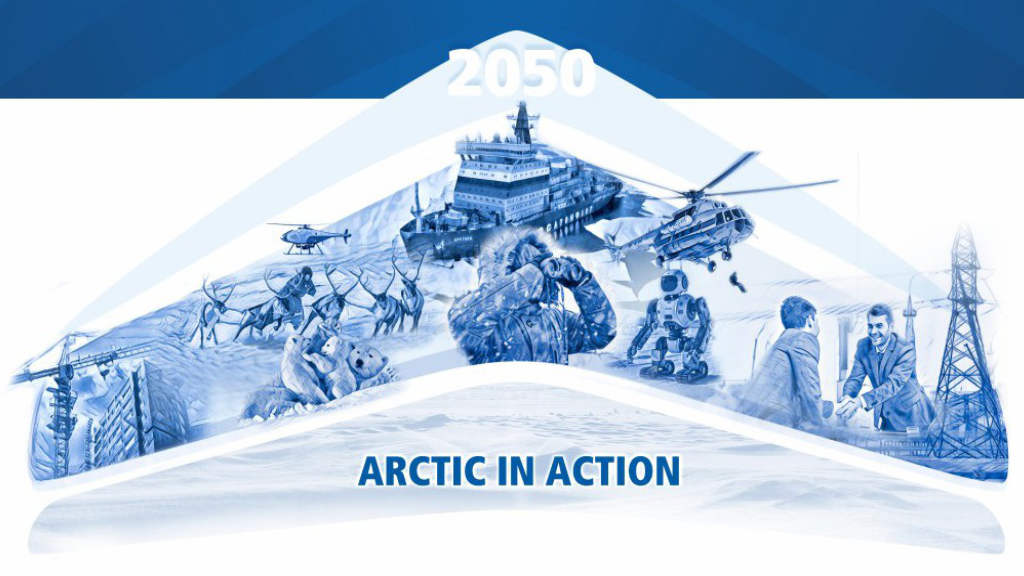The Russian Ambassador to Mexico, Nikolay Sofinsky, has given an interview to TV BRICS concerning Russia’s current relations with Mexico. This included subjects such as bilateral development and trade details, BRICS, cultural exchanges and the potential for other Russian-Latin American trade. TV BRICS questions are prefixed as such, Nikolay Sofinsky’s responses are prefixed NS. Our own Russia’s Pivot To Asia trade summary is at the end, complete with 2025 economic data and statistics.
TV BRICS: “How do you assess the current level of economic cooperation between Russia and Mexico? Which sectors, in your opinion, have the greatest potential for the development of bilateral relations in the coming years? What joint projects between Russia and Mexico are currently underway?”
NS: “Economic cooperation between Russia and Mexico continues to develop despite external challenges. Mexico remains Russia’s second largest trading partner in Latin America after Brazil, and the structure of bilateral trade remains diversified. Russian exports include chemical fertilisers, metal products, grain and rubber, while Mexico supplies Russia with coffee, pepper, pharmaceuticals, and food products.
The greatest potential for the development of bilateral relations is concentrated in several key sectors. In the energy sector, the oil industry is of particular interest, with Russian companies contributing to offshore exploration and production, modernisation of refining facilities and supply of equipment. In addition, Russia has advanced lithium extraction technologies that may be in demand in Mexico in light of the growing interest in developing local deposits. Cooperation in the field of nuclear energy continues. There are prospects for cooperation in the energy green transition.
The agro-industrial complex also remains an important area. Russia traditionally holds a significant share in wheat exports to Mexico. There is potential for expanding supplies of other agricultural commodities. There is also continued interest in cooperation in the pharmaceutical and chemical industries, information technology and engineering, and artificial intelligence.
Despite the difficult geopolitical situation, Russian and Mexican economic operators are adapting to new conditions and finding alternative ways of cooperation. This is evidenced by a series of already implemented and planned joint business forums and missions in a variety of areas with multiple initiatives and interested participation of companies from both countries, organised on the Russian side by the Russian and Moscow Chamber of Commerce and Industry (CCI), the Russian Union of Industrialists and Entrepreneurs (RSPP), Roscongress, and on the Mexican side by trade and industrial associations, such as the National Chamber of the Transformation Industry (CANACINTRA) or the Employers Confederation of the Mexican Republic (COPARMEX).”
TV BRICS: “How do Russia and Mexico support the development of cultural and educational exchanges? Are there examples of specific projects?”
NS: “Cultural and educational exchanges are an important part of bilateral relations. Within the framework of the Intergovernmental Commission on Cultural Cooperation, a programme until 2026 was signed, which includes exchanges of exhibitions, festivals, and artistic teams. Mexican delegations actively participate in Russian events such as the St. Petersburg International Economic Forum, the World Youth Festival and the Games of the Future multi-sport tournament.
Inter-university cooperation is also developing, including exchange of students and teachers. In 2025, a number of events will be held to mark the 135th anniversary of the establishment of diplomatic relations between Russia and Mexico, which emphasises the long-term nature of cultural ties.”

TV BRICS: “What steps can help increase bilateral trade turnover between Russia and Mexico?”
NS: “To increase trade turnover it is necessary to modernise the infrastructure of trade and economic cooperation, to adapt it to modern realities. First of all, this means working out and launching new mechanisms of ensuring that would allow us to overcome the imbalance of global financial and logistical regulation that has emerged in the world due to the multiple anti-Russian sanctions imposed by the West, the trend towards protectionism and outright voluntarism in economic policy that has sharply increased in recent years. Despite Mexico’s refusal to join these illegal actions, in one way or another they impose restrictions on our trade as secondary consequences.
Joint efforts to build new supply chains and to establish a system of settlements in national currencies could be one of the key areas in the search for ways to overcome them. The recent inclusion of Mexico in the list of countries allowed to trade on the Russian currency market creates a basis for the development of new mechanisms of mutual settlements, which will allow diversifying financial instruments and reducing dependence on currencies of third countries.”
TV BRICS: “How actively does Mexico interact with BRICS? Are there any consultations on the country’s potential participation in BRICS?”
NS: “Mexico does not participate in BRICS and, according to official statements by the Mexican leadership, has no intention of joining the group. It prefers to align its trade and economic priorities mainly within the framework of the North American Free Trade Agreement, the second edition of which was signed by Mexico with the United States and Canada in 2018 (NAFTA-2). The Mexican economy is fully integrated into the system of ties under this agreement, and given its priority importance for the country, it is unlikely that it will be able to turn towards any other integration structures until the revision process is completed.
Therefore, the Mexicans have no consultations with BRICS as an association. But there are close forms of cooperation with each of its member countries. There is interest in diversifying foreign economic relations. Perhaps at some stage in the future Mexico’s interest in BRICS may acquire more advanced practical outlines.”
TV BRICS: “Is there a potential for multilateral initiatives between Russia, Mexico, and other Latin American countries?”
NS: “Yes, the potential for multilateral initiatives between Russia, Mexico, and other Latin American countries definitely exists. Latin America as a whole seeks to diversify its economic and trade partners, and Russia, despite the current sanctions restrictions, continues to build relations with the region based on mutually beneficial cooperation. Promising areas of focus include:
Agro-industrial complex and food security. Russia is already actively supplying grain (especially wheat) to countries in the region, including Mexico. Joint initiatives could include the creation of regional logistics hubs for agricultural trade, as well as investments in food processing and storage.
Energy and mining. Russia has advanced technologies in oil production, nuclear power and lithium processing, which is becoming a strategically important resource in Latin America (especially in Mexico, Chile, Bolivia, and Argentina). Projects to develop lithium deposits involving several countries in the region are possible.
Pharmaceuticals and healthcare. Possible joint projects in drug production and biotechnology.
Cooperation in high technology and artificial intelligence. Russia has a lot to offer Latin American partners in this area. The recent business contacts with the Mexicans, which I mentioned before, testify to the practical interest here and in a broader, regional dimension.”
RPA Russia-Mexico Demographics Summary

With a population of about 132 million, a GDP (PPP) of US$3.4 trillion, and a GDP per capita (PPP) of US$25,560, Mexico is projected to see a 2025 GDP growth of 1.5%.
Mexico has good relations with Russia but has to play these off against its relations with the United States. However, the new Mexican President, Claudia Sheinbaum is pro-Russian, and historic trade ties have been positive.
Russia is a key international supplier of fertilizers to Mexico, accounting for nearly a quarter of all Mexican imports of nitrogen and mixed nitrogen, phosphorus, and potash fertilizers. Rolled steel, aluminium, and synthetic rubber are among Mexico’s other important imports from Russia.
Mexico was also a significant participant in its Sputnik V COVID-19 vaccine scheme. Mexico’s main exports to Russia include tequila, beer, beef, and automobiles, while Mexico is Russia’s third biggest trading partner in Latin America. Russian multinational companies such as Power Machines operate in Mexico and Mexican multinational companies such as Grupo Omnilife, Grupo Maseca, Nemak, Cemex, Mabe, Katcon, Metalsa, and Gruma operate in Russia. Russia has a Double Tax Treaty with Mexico.
Mexico announced in March 2022 that Mexico would not be participating in any economic sanctions against Russia and criticized the overseas censorship of Russian state media. There has been some talk of a Mexican free trade agreement with the Eurasian Economic Union, however, this would probably be a step too far for the neighbouring United States, with the US being Mexico’s largest trade partner.
According to figures released by the Bank of Mexico, Russia’s exports of goods to Mexico increased by over 70% during 2023, following initial declines caused by sanctions, resulting in a 2024 bilateral trade volume of about US$2.7 billion.
As the Ambassador stated, Mexico remains Russia’s second largest trading partner in Latin America after Brazil, and the structure of bilateral trade remains diversified. Russia’s primary exports include chemical fertilisers, metal products, grain and rubber, while Mexico supplies Russia with coffee, pepper, pharmaceuticals, and food products.
Further Reading






